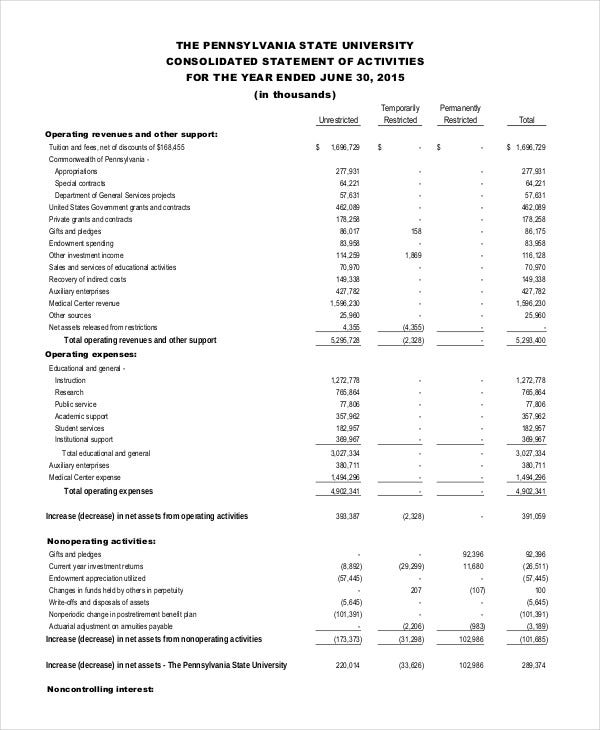Content

In contrast, revenues can only be recorded when they are assured of being received. It is a common method used to evaluate accounts receivable and inventory, and is also used in cost accounting. Net realizable value accounts for the value of an asset in terms of the amount it would receive upon sale, minus selling costs. Net Realisable Value advantages and disadvantages can also show the aggregate total in the ending balance of a trade account receiving an offset allowance to doubtful accounts. The net total cash represents the amount the company’s management expects to realise and collect from receivable outstanding accounts.
The conservative principles involved in the calculation prevent the overstatement of assets. It also allows for the conservative and appropriate recording of assets for a business. Are you a business owner looking to complete the eventual sale of equipment or inventory? Are you an accountant trying to assess the value of your client’s assets?
Module 8: Inventory Valuation Methods
The examples include Short-Term Investments, Prepaid Expenses, Supplies, Land, equipment, furniture & fixtures etc. Inventory Write-DownInventory Write-Down refers to decreasing the value of an inventory due to economic or valuation reasons. When the inventory net realizable value formula loses some of its value due to damaged or stolen goods, the management devalues it & reduces the reported value from the Balance Sheet. However, inventory i2 and the preparation cost to sell this inventory i2 remain the same at $70 and $30, respectively.
CFI’s Reading Financial Statementscourse will go over how to read a company’s complete set of financial statements. The calculation for Net Realizable Value has a variety of methods to get an answer. The method used will depend on the purpose behind finding the NRV.
NRV and Lower Cost or Market Method
The NRV is commonly used in the estimation of the value of endinginventory or accounts receivable. This was updated in 2015 to where companies must now use the lower of cost or NRV method, which is more consistent with IFRS rules. In essence, the term “market” has been replaced with “net realizable value.” NRV is used in both generally accepted accounting principles as well as international financial reporting standards . According to the formula, after we realize the sum of the income we generated, we must subtract all production and selling costs or the costs of any uncollected payment amounts.
What is the net cash realizable value?
Cash realizable value is the cash remaining after the uncollectable amount has been subtracted from an account receivable. This net amount can be found by combining the receivable balance and the allowance for doubtful accounts on a company's balance sheet.
Inventories, in general, cannot be revalued upward once written down. Let’s take an example to understand the calculation of Net Realizable Value formula in a better manner. So the telephones’ NRV can be calculated as $5,000 – $240 -$40, which is equal to $4,720. As a result, the license is one of the most coveted ones in accountancy in the world.
Net Realizable Value Formula
Each product is then produced separately after the split-off point, and NRV is used to allocate previous joint costs to each of the products. However, there may be residual costs such as commissions or fees a company must plan for and recognize will impact net proceeds. Say Geyer Co. bought 200 Rel 5 HQ Speakers five years ago for $110 each and sold 90 right off the bat, but has only sold 10 more in the past two years for $70. There are still a hundred on hand, costs using FIFO, but the speakers are obsolete and management feels they can sell them with some slight modifications to each one that cost $20 each. The old rule required entities to measure inventory at the LCM. 1As indicated previously, other versions of generally accepted accounting principles do exist.

US GAAP does not permit a write-up ofwrite-downsreported in a prior year, unlike international reporting standards, even if the net realizable value for inventory has been recovered. The NRV, which can also be stated as a debit balance in the asset account, is obtained by subtracting account receivables from the credit amount. NRV also considers the cost of selling in its equation, so NRV comes out to be lower than the market value of an asset. Company ABC Inc. is selling the part of its inventory to Company XYZ Inc. For reporting purposes, ABC Inc. is willing to determine the net realizable value of the inventory that will be sold.
Calculation of Net Realizable Value (Step by Step)
It can then apply those percentages to its outstanding accounts to make sure it is maintaining a proper allowance. Subtract the amount of the doubtful-accounts allowance from the total accounts receivable. The result is the net realizable value of accounts receivable. Determine how much money you will have to spend to get the items ready for sale and to actually sell them.
- The LCM method states that the cost of inventory must be recorded at the original cost or market price, whichever is lower.
- For example, imagine two different model cars being manufactured on the same assembly line up to a certain point, before splitting off to be finished in different ways specific to their model.
- Another advantage of NRV is its applicability, as the valuation method can often be used across a wide range of inventory items.
- It is used in determining the market for single-hand inventory items or lower costs.
- In the latter case, the good offsets the bad, and a write-down is only needed if the overall value is less than the overall cost.
- From there, we’ll need to subtract the separable costs, and that gets us down to net realizable value.
In that case, we subtract the amount not received instead of the production and sale costs. The very essence of cost accounting is to determine the actual costs of products in order to arrive at its sales price. NRV considers two factors for measuring value — an asset’s fair market value and the costs to sell or obtain that value. The FMV is defined in accounting guidelines as the amount a willing, informed buyer would pay for the asset on the open market. NRV is calculated by deducting from an asset’s FMV the costs the seller might incur during the sale transaction, such as transportation costs, taxes, commissions or disposal fees.
The third step is to subtract the selling/disposal costs from the FMV to get the NRV. Companies rely on past experience to estimate what percentage of A/R is uncollectible. They usually do this through an “aging analysis.” The basic principle is that the longer a receivable is past due, the more likely it is to go uncollected.
This is true for even recently manufactured products; companies not in tune with market conditions may be producing goods that are already outdated. GAAP requires that certified public accountants apply the principle of conservatism to their accounting work. Many business transactions allow for judgment or discretion when choosing an accounting method. The principle of conservatism requires accountants to choose the more conservative approach to all transactions. This means that the accountant should use the accounting method that generates less profit and does not overstate the value of assets. Net Realizable Value is an important approach metric and is used in account reporting.
What is net realizable value with example?
Example of Net Realizable Value
ABC International has a green widget in inventory with a cost of $50. The market value of the widget is $130. The cost to prepare the widget for sale is $20, so the net realizable value is $60 ($130 market value – $50 cost – $20 completion cost).

